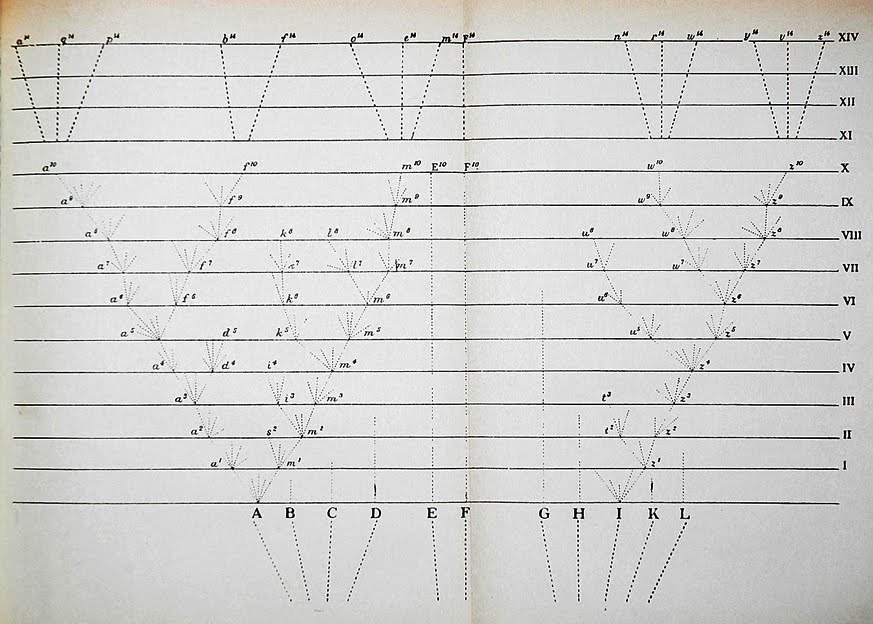![]()
Nuevas especies aparecen y desaparecen otras por obra de la imaginación del autor en el párrafo centésimo septuagésimo octavo de El Origen de las Especies

Ahora la selección natural, se nos dice, tiene una tendencia divergente. En otros casos, se nos había dicho, puede asimismo tener una tendencia convergente. Cuanto más próximas sean dos especies nuevas, más relacionadas estarán entre sí. Si son muy divergentes, dice sabiamente el autor, vendrán a constituir un género nuevo. Todo está así explicado en el gráfico.
178.
The new species in our diagram, descended from the original eleven species, will now be fifteen in number. Owing to the divergent tendency of natural selection, the extreme amount of difference in character between species a14 and z14 will be much greater than that between the most distinct of the original eleven species. The new species, moreover, will be allied to each other in a widely different manner. Of the eight descendants from (A) the three marked a14, q14, p14, will be nearly related from having recently branched off from a10; b14 and f14, from having diverged at an earlier period from a5, will be in some degree distinct from the three first-named species; and lastly, o14, e14, and m14, will be nearly related one to the other, but, from having diverged at the first commencement of the process of modification, will be widely different from the other five species, and may constitute a sub-genus or a distinct genus.
Las nuevas especies de nuestro cuadro, que descienden de las once especies primitivas, serán ahora en número de quince. Debido a la tendencia divergente de la selección natural, la divergencia máxima de caracteres entre las especies a14 y z14 será mucho mayor que entre las más diferentes de las once especies primitivas. Las nuevas especies, además, estarán relacionadas entre sí de modo muy diferente. De las ocho descendientes de A, las tres señaladas por a14, q14 y p14 estarán muy relacionadas por haberse separado recientemente de a10; b14 y f14, por haberse separado en un período anterior de a5, serán bastante distintas de las tres especies primero mencionadas, y, por último, o14, e14 y m14 estarán muy relacionadas entre sí; pero por haberse separado desde el mismo principio del proceso de modificación serán muy diferentes de las otras cinco especies, y pueden constituir un subgénero o un género distinto.
